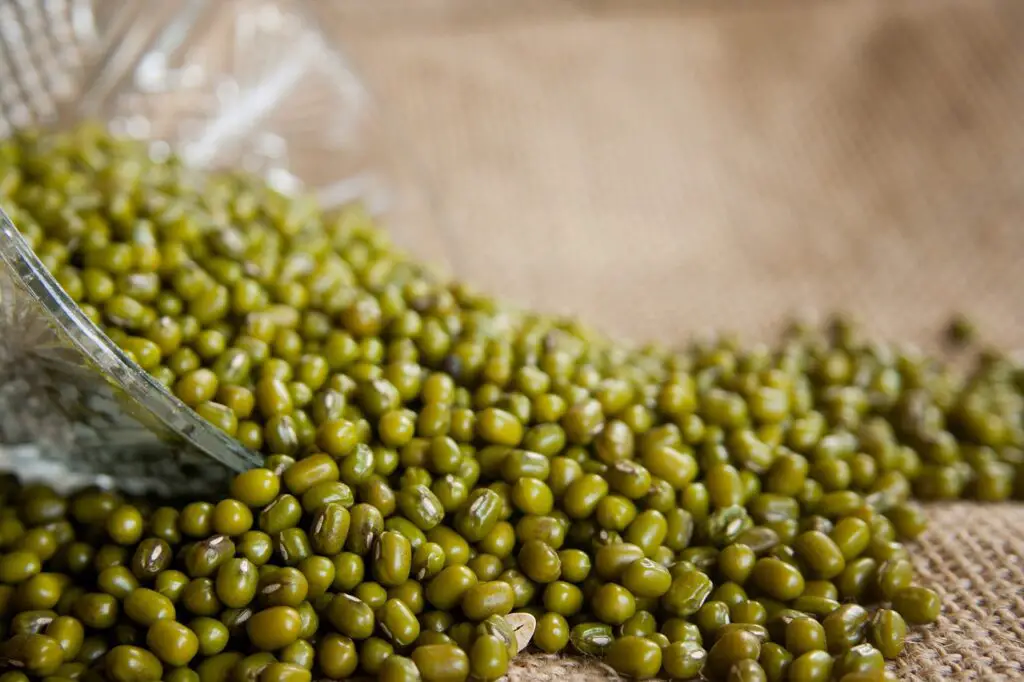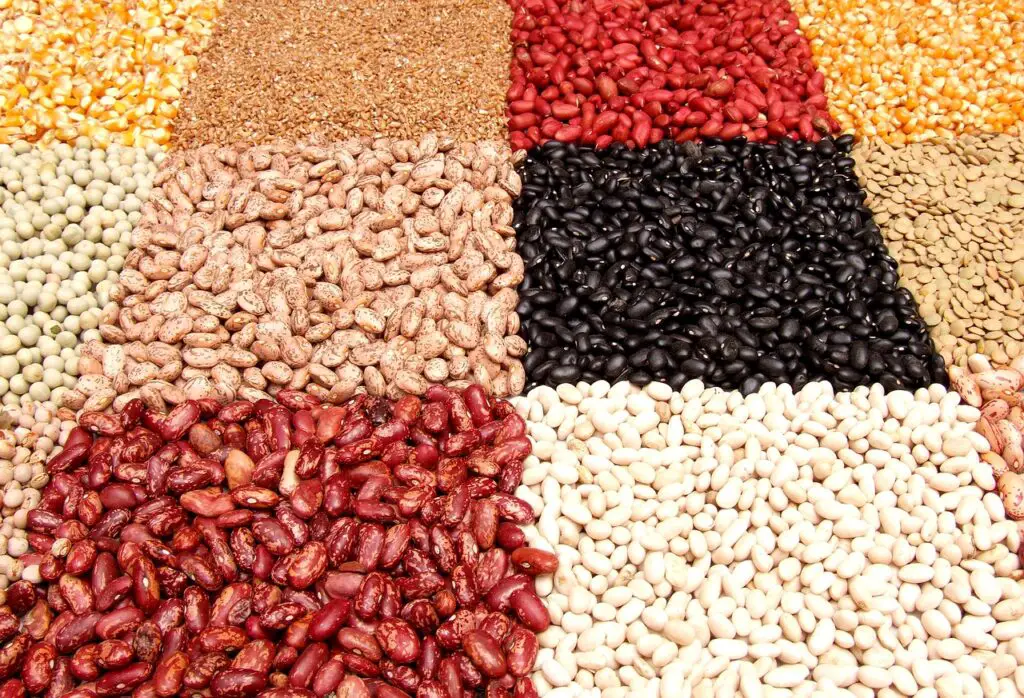
Dry beans are a type of legume that are harvested when the beans inside the pod have fully matured and dried out. They are a staple food in many cultures and are known for their high nutritional value. There are many different types of dry beans, including kidney beans, black beans, navy beans, and pinto beans.
Dry beans are an excellent source of protein, fiber, and various vitamins and minerals. They are also low in fat and calories, making them a healthy addition to any diet. In addition to their nutritional benefits, dry beans are also versatile and can be used in a wide variety of dishes, from soups and stews to salads and dips.
Table of Contents
Understanding Dry Beans
Dry beans are a type of legume that are harvested when the beans are fully mature, and the pods have dried out. They are also known as pulses, and they are a staple food in many cultures around the world.
Beans are a rich source of protein, fiber, and many essential vitamins and minerals, making them an important part of a healthy diet. They are also low in fat and calories, making them a great food for weight management.
There are many different types of beans, including kidney beans, black beans, navy beans, pinto beans, and more. Each type of bean has its own unique flavor and texture, and they can be used in a wide variety of dishes, from soups and stews to salads and dips.
When cooking dry beans, it is important to soak them overnight before cooking to help reduce cooking time and make them easier to digest. They can be cooked on the stove, in a slow cooker, or in a pressure cooker, depending on your preferred method.
Overall, dry beans are a nutritious and versatile food that can be enjoyed in many different ways. Whether you are looking for a plant-based source of protein or just want to add more variety to your diet, dry beans are a great choice.
Types and Varieties of Dry Beans
Dry beans come in a wide variety of shapes, sizes, and colors. They are a staple in many cuisines around the world and are known for their versatility and nutritional value. Here are some of the most common types and varieties of dry beans:
Pinto Beans
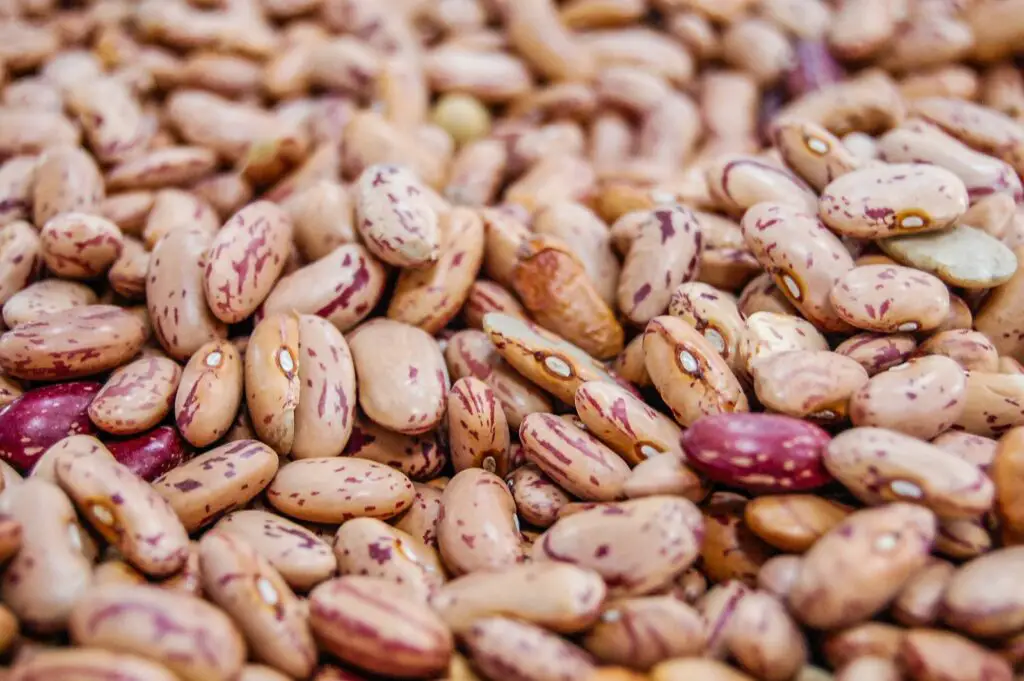
Pinto beans are one of the most popular types of dry beans in the United States. They are medium-sized and have a beige background with brown speckles. They are commonly used in Mexican cuisine, especially in dishes like refried beans and chili.
Black Beans
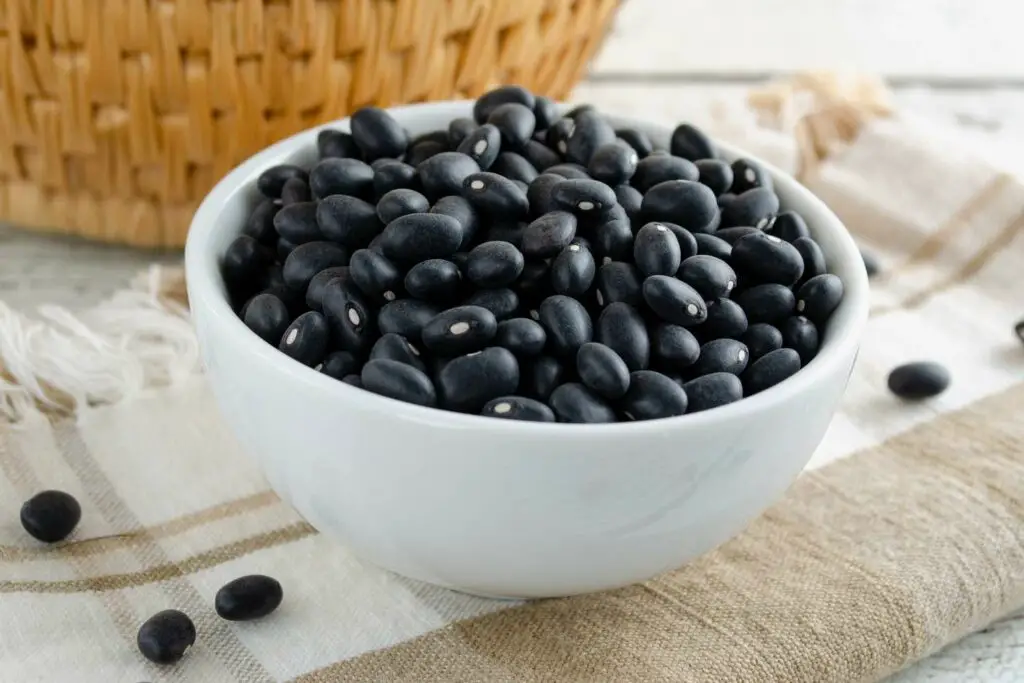
Black beans are small, shiny, and black in color. They are commonly used in Latin American cuisine and are a staple in dishes like rice and beans and black bean soup.
Great Northern Beans
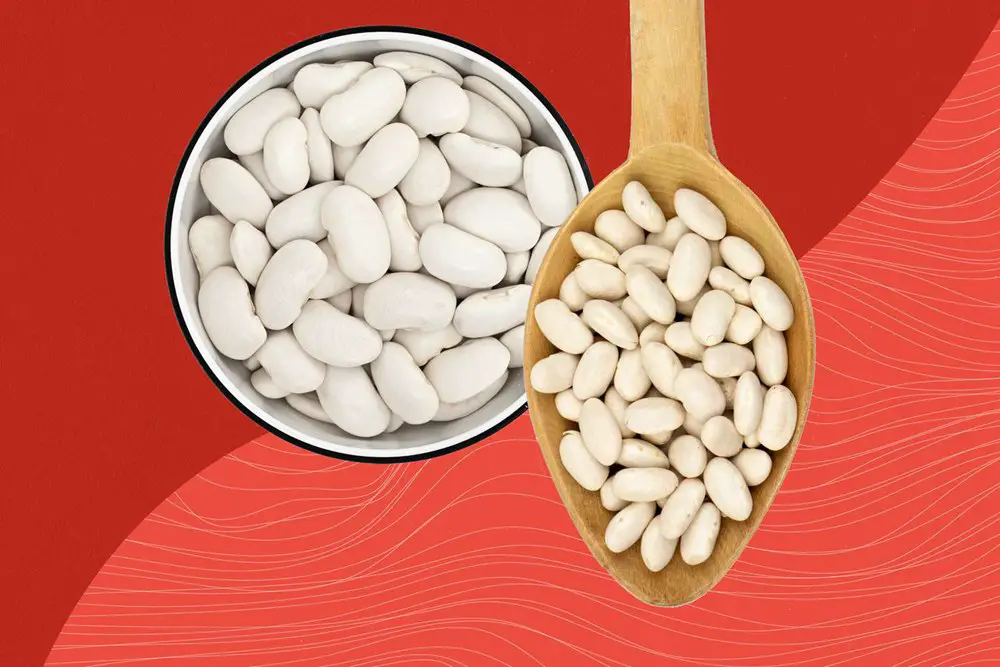
Great Northern beans are medium-sized and have a white color. They are commonly used in soups and stews and are known for their creamy texture.
Kidney Beans
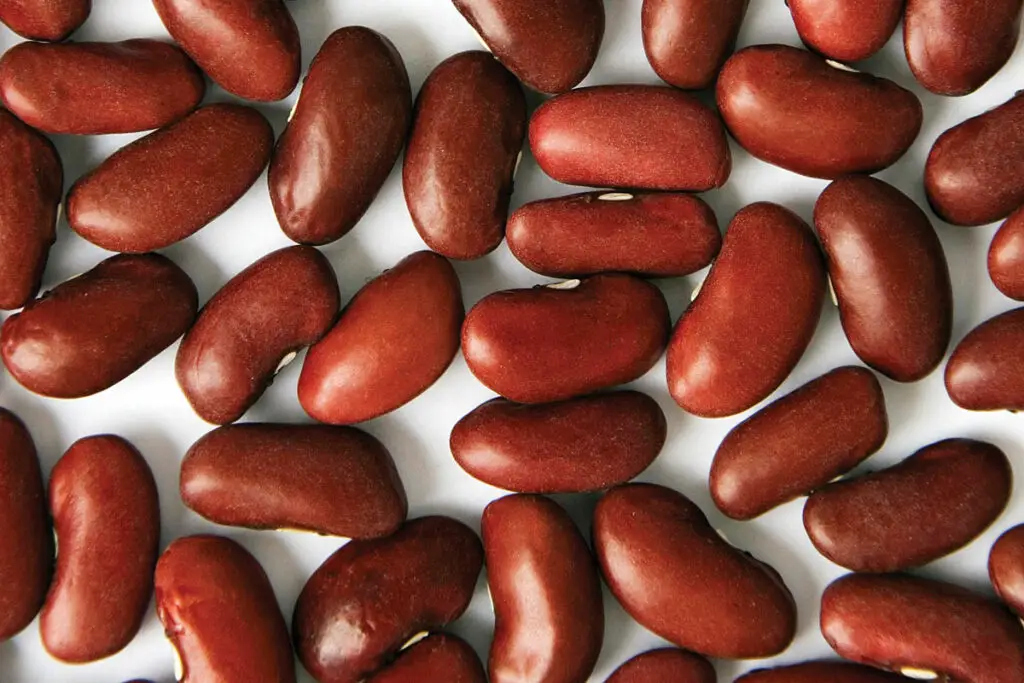
Kidney beans are large and kidney-shaped. They come in both red and white varieties and are commonly used in chili, salads, and soups.
Lima Beans
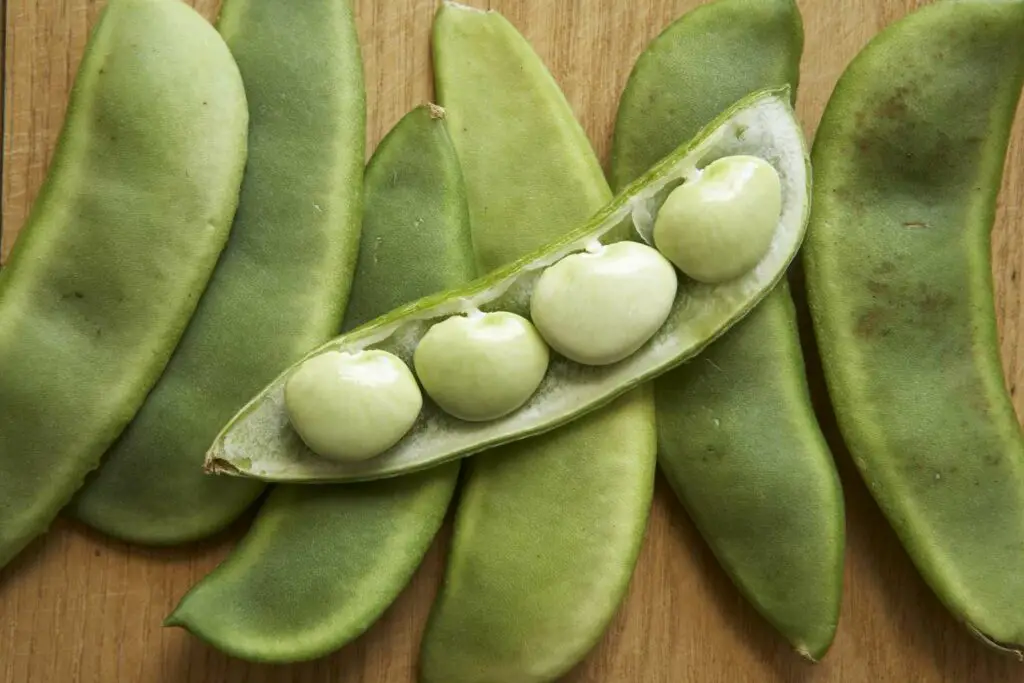
Lima beans are large and flat and come in both white and green varieties. They are commonly used in soups and stews and are known for their buttery texture.
Navy Beans
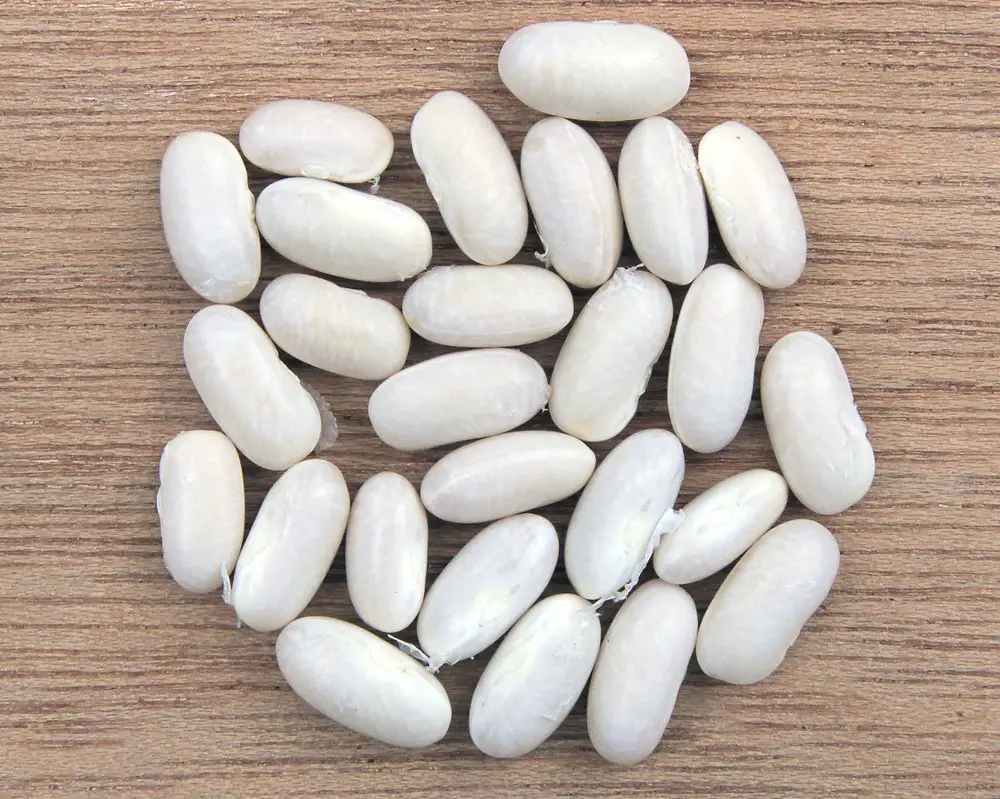
Navy beans are small and oval-shaped and have a white color. They are commonly used in baked beans and soups.
Chickpeas
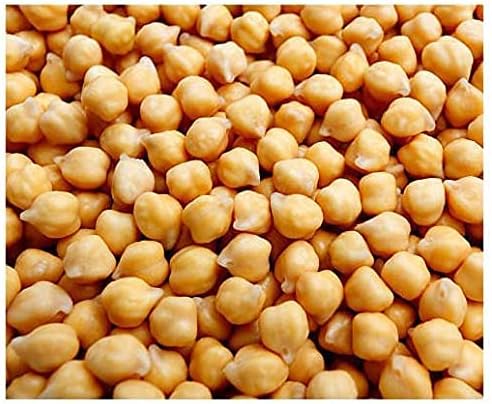
Chickpeas, also known as garbanzo beans, are small and round and have a beige color. They are commonly used in Middle Eastern and Mediterranean cuisine and are a staple in dishes like hummus and falafel.
Black-Eyed Peas
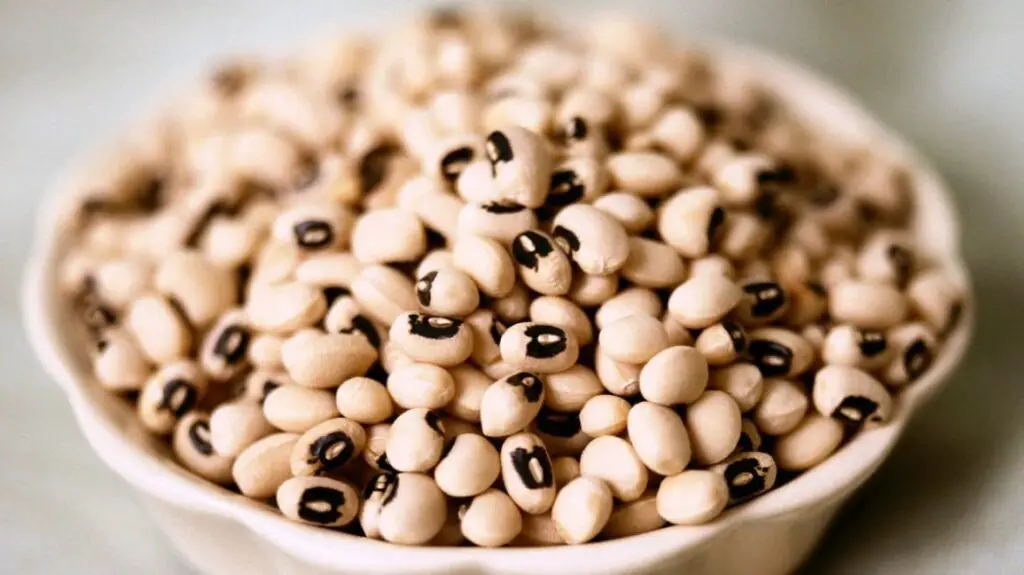
Black-eyed peas are small and oval-shaped and have a beige color with a black spot on one end. They are commonly used in Southern cuisine and are a staple in dishes like Hoppin’ John and black-eyed pea salad.
Butter Beans
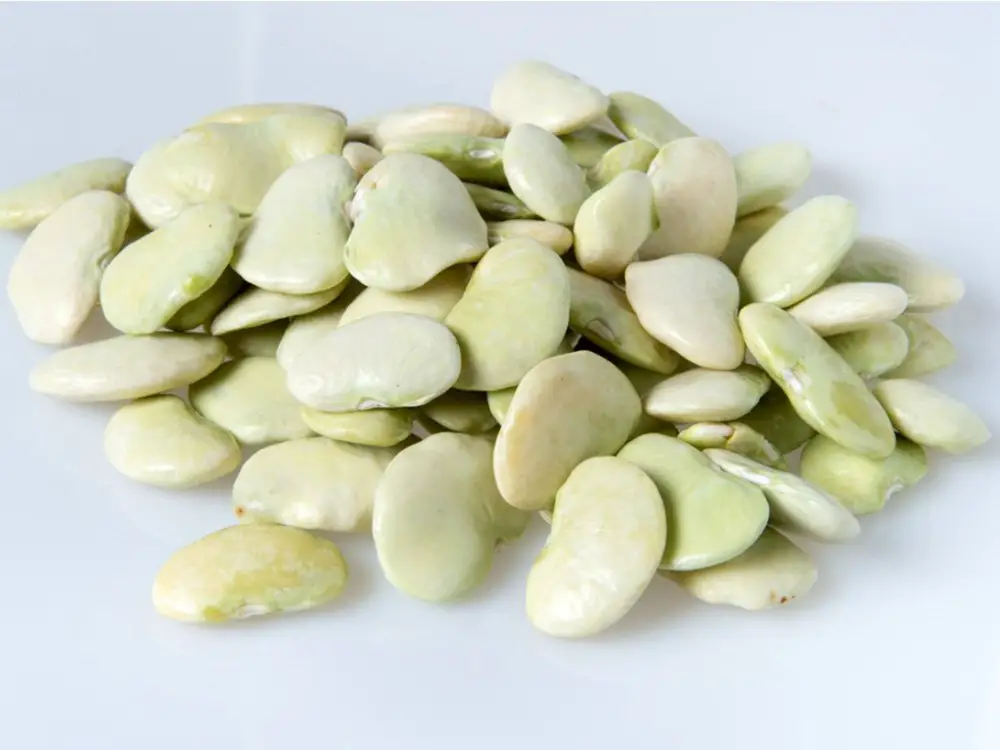
Butter beans are large and flat and have a creamy texture. They are commonly used in Southern cuisine and are a staple in dishes like succotash and butter bean soup.
Adzuki Beans
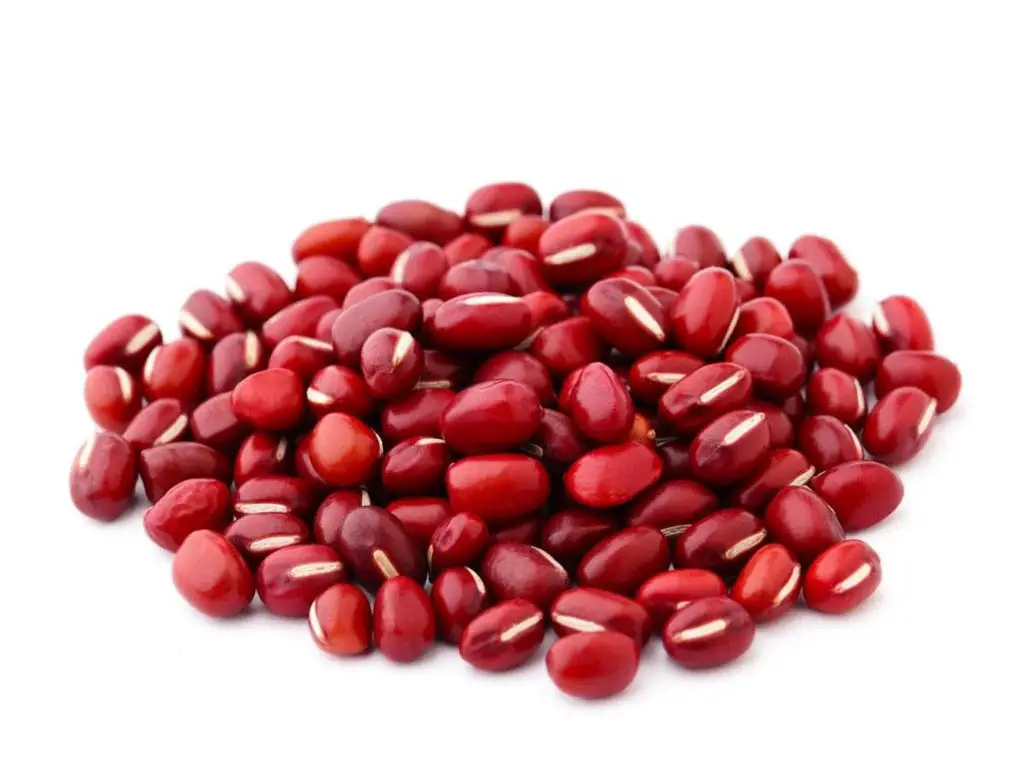
Adzuki beans are small and red in color. They are commonly used in Asian cuisine and are a staple in dishes like sweet red bean paste and adzuki bean soup.
Soybeans

Soybeans are small and oval-shaped and have a beige color. They are commonly used in Asian cuisine and are a staple in dishes like tofu and soy milk.
Turtle Beans
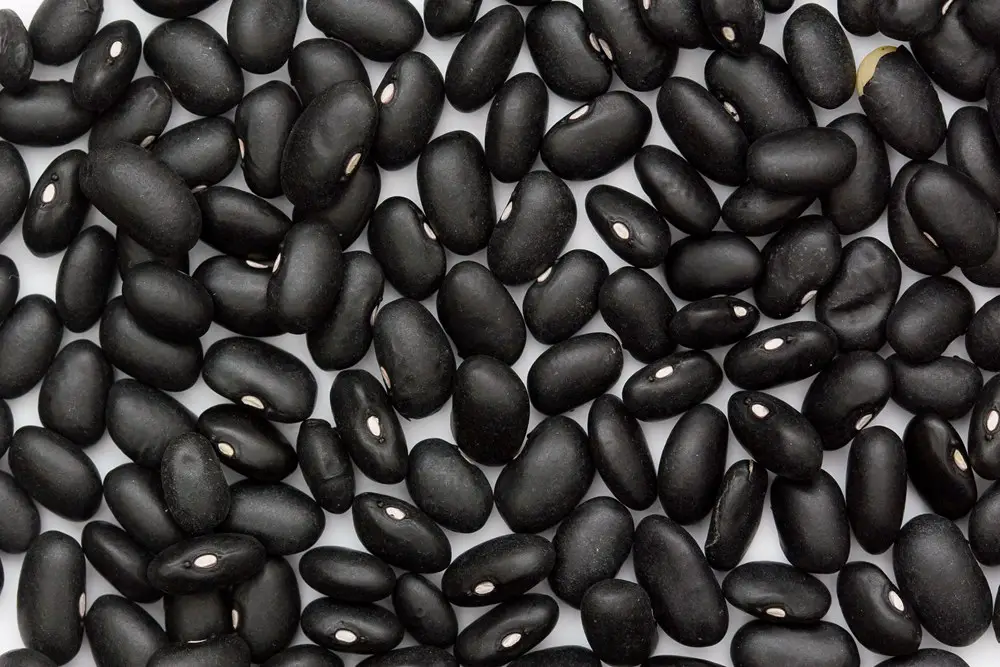
Turtle beans, also known as black beans, are small and oval-shaped and have a black color. They are commonly used in Latin American cuisine and are a staple in dishes like rice and beans and black bean soup.
Sieva Beans
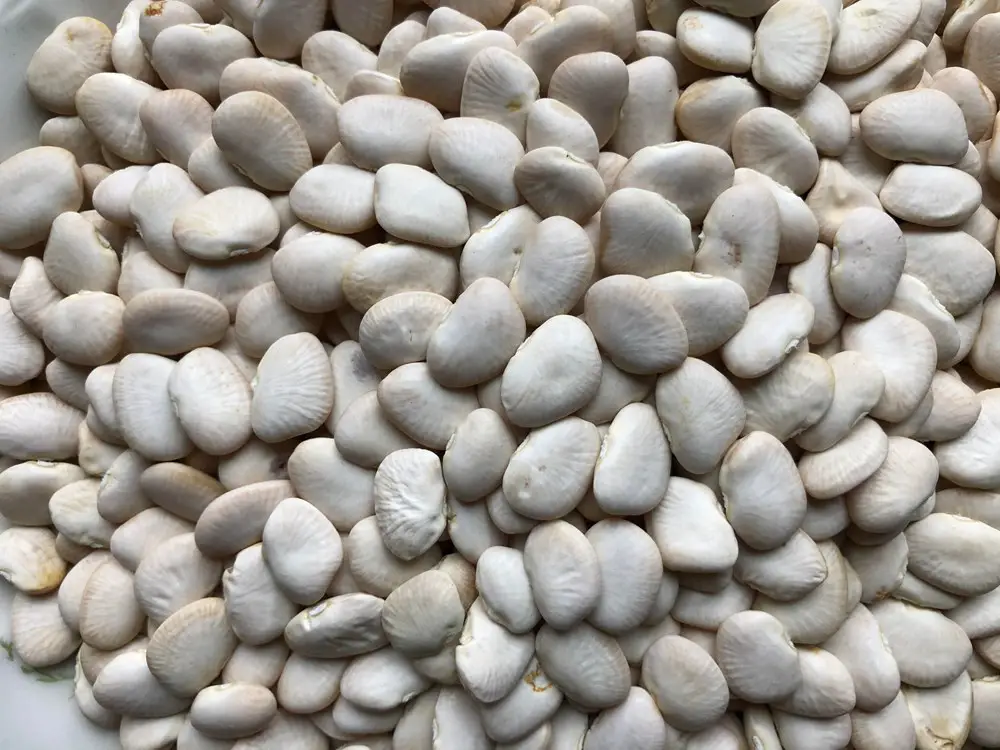
Sieva beans, also known as Carolina beans, are small and oval-shaped and have a white color. They are commonly used in Southern cuisine and are a staple in dishes like Hoppin’ John and sieva bean soup.
Fava Beans
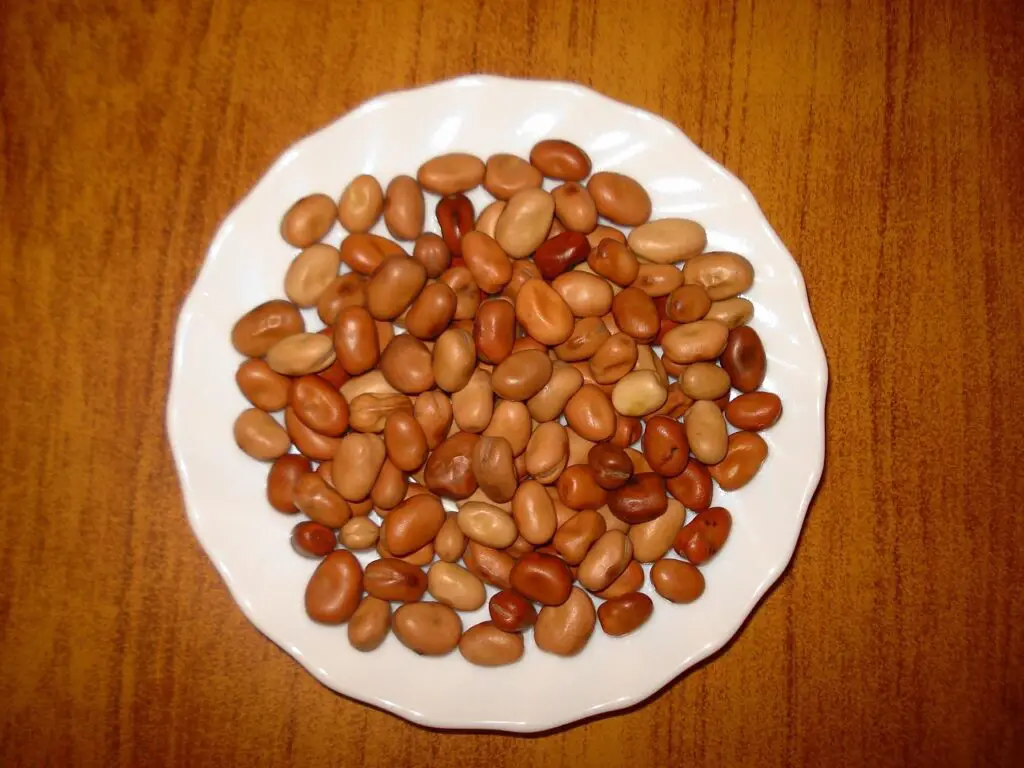
Fava beans are large and flat and have a green color. They are commonly used in Mediterranean cuisine and are a staple in dishes like ful medames and fava bean dip.
Mung beans are small and oval-shaped and have a green color. They are commonly used in Asian cuisine and are a staple in dishes like sprouts and mung bean soup.
White Beans
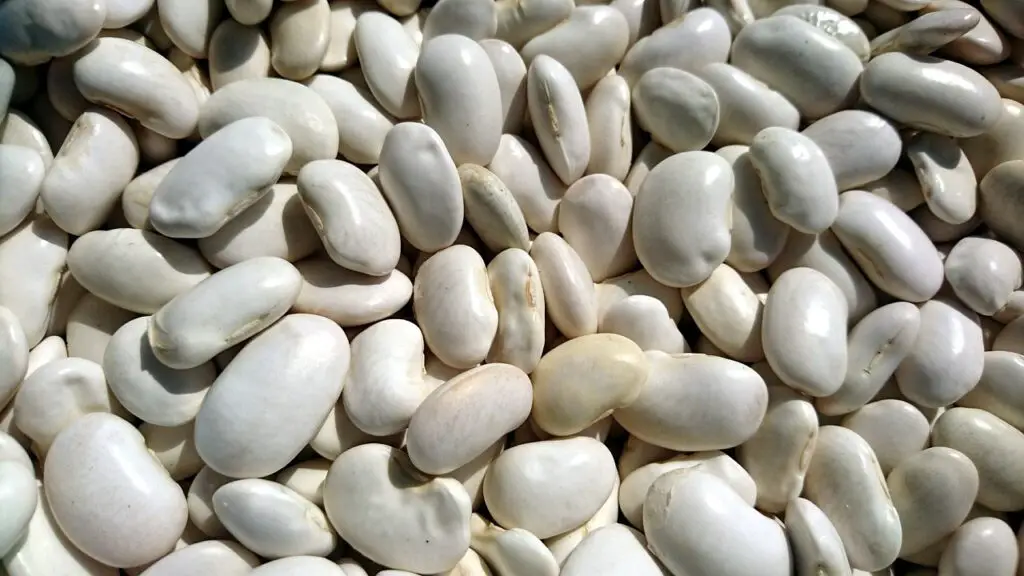
White beans, also known as cannellini beans, are medium-sized and have a white color. They are commonly used in Italian cuisine and are a staple in dishes like minestrone soup and pasta e fagioli.
Growing and Harvesting Dry Beans
Dry beans are easy to grow and can be a great addition to any garden. They thrive in warm weather and can be grown in a variety of soil types. When planting dry beans, it is important to choose the right variety for your climate and soil type.
To grow dry beans, the seeds should be planted in soil that is well-draining and has a pH between 6.0 and 7.5. The soil should also be rich in nitrogen, which can be added through the use of compost or fertilizer. It is important to avoid planting dry beans in soil that is too acidic, as this can cause stunted growth and poor yields.
Dry beans should be planted after the last frost has passed, as they are sensitive to cold temperatures. The seeds should be planted about 1 inch deep and 3-4 inches apart. Once the plants have emerged, they should be thinned to a distance of 6-8 inches apart to allow for proper growth.
Dry beans require regular watering, especially during dry spells. However, it is important to avoid overwatering, as this can lead to root rot and other problems. It is also important to keep the area around the plants free of weeds, which can compete for nutrients and water.
When the dry bean pods have turned brown and are dry to the touch, they are ready to be harvested. The pods should be picked before they split open, as this can cause the beans to fall out. Once the pods have been harvested, they should be left to dry in a warm, dry place for several days.
After the pods have dried, the beans can be removed by hand or by using a threshing machine. The beans should then be stored in a cool, dry place until they are ready to be used. Dry beans can be used in a variety of dishes, including soups, stews, and salads.
Nutritional Value of Dry Beans
Dry beans are an excellent source of nutrients, making them a healthy addition to any diet. They are rich in protein, iron, vitamins, minerals, fiber, magnesium, zinc, folic acid, B vitamins, and carbohydrates.
One cup of cooked dry beans contains approximately 15 grams of protein, which is equivalent to the protein found in two ounces of meat. Protein is essential for building and repairing tissues in the body, and it is especially important for athletes and bodybuilders.
Dry beans are also an excellent source of iron, which is essential for healthy blood cells. One cup of cooked dry beans contains approximately 4 milligrams of iron, which is about 20% of the recommended daily intake for adults. Iron is especially important for women, who are at a higher risk of developing iron-deficiency anemia.
In addition to protein and iron, dry beans are also a good source of vitamins and minerals. They are particularly rich in folic acid, which is important for pregnant women. One cup of cooked dry beans contains approximately 260 micrograms of folic acid, which is about 65% of the recommended daily intake for adults.
Dry beans are also high in fiber, which is important for digestive health. One cup of cooked dry beans contains approximately 15 grams of fiber, which is about half of the recommended daily intake for adults. Fiber helps to regulate blood sugar levels and can also help to reduce cholesterol levels.
Overall, dry beans are a nutrient-dense food that can provide a wide range of health benefits. They are an excellent source of protein, iron, vitamins, minerals, fiber, magnesium, zinc, folic acid, B vitamins, and carbohydrates, making them an essential part of a healthy diet.
Cooking Dry Beans
Soaking Methods
Before cooking dry beans, it is recommended to soak them overnight to reduce cooking time and improve texture. To soak dry beans, rinse them under cold water and remove any debris or broken beans. Then, place the beans in a large bowl and cover them with water, making sure there is at least two inches of water above the beans. There are two main methods for soaking dry beans: overnight soak and quick soak.
- Overnight Soak: This method involves soaking the beans in water for at least 8 hours or overnight. Drain the soaking water and rinse the beans before cooking.
- Quick Soak: This method involves boiling the beans for 2-3 minutes, removing them from heat, and letting them soak for 1 hour. Drain the soaking water and rinse the beans before cooking.
Cooking Times
The cooking time for dry beans depends on the type and age of the beans. Generally, it takes 1-2 hours to cook dried beans. To cook dried beans, drain the soaking water and rinse the beans. Place the beans in a large pot and cover them with water or broth. The ratio of beans to liquid should be 1:3. Bring the liquid to a boil, then reduce the heat to a simmer and cook until the beans are tender. Use the following table as a general guide for cooking times:
| Bean Type | Cooking Time |
|---|---|
| Black Beans | 60-90 minutes |
| Kidney Beans | 60-90 minutes |
| Navy Beans | 60-90 minutes |
| Pinto Beans | 60-90 minutes |
| Lentils | 20-30 minutes |
Adding Flavor
To add flavor to cooked dried beans, consider adding aromatics such as onions, garlic, and bay leaves to the cooking liquid. Salt can be added towards the end of cooking to prevent the beans from becoming tough. Acidic ingredients such as tomatoes and vinegar should be added towards the end of cooking to prevent the beans from becoming tough. For a smoky flavor, consider adding smoked paprika or chipotle peppers to the cooking liquid.
Overall, cooking dried beans is a simple and affordable way to add protein and fiber to your diet. By soaking the beans and adding flavor to the cooking liquid, you can ensure that your beans are tender and flavorful.
Dry Beans in Recipes
Dry beans are versatile ingredients that can be used in a variety of recipes. They are commonly used in soups, stews, and chili, but can also be used in salads, Indian dishes, and even baked beans.
One popular recipe that uses dry beans is chili. Chili is a hearty and flavorful dish that is perfect for cold weather. It typically includes ground beef, tomatoes, onions, and a variety of spices. However, beans are also a key ingredient in chili. They add texture and flavor to the dish, and can also help to stretch the recipe to feed more people.
Another popular recipe that uses dry beans is soup. Soups are a great way to use up leftover ingredients and can be customized to fit any taste preference. Dry beans can be used in a variety of soups, including vegetable soup, chicken noodle soup, and minestrone soup. They add protein and fiber to the soup, making it more filling and satisfying.
Stews are another recipe that can benefit from the addition of dry beans. Stews are similar to soups, but are typically thicker and heartier. They often include meat, vegetables, and a thick sauce. Adding dry beans to a stew can help to thicken the sauce and add texture to the dish.
Refried beans are a popular side dish that are made from cooked and mashed dry beans. They are commonly used in Mexican cuisine and can be served as a side dish or used as a filling for burritos and tacos.
Bean salad is another recipe that is perfect for using dry beans. Bean salad typically includes a variety of beans, such as kidney beans, chickpeas, and black beans, along with vegetables and a dressing. It is a healthy and filling dish that can be served as a side dish or as a main course.
Overall, dry beans are a versatile ingredient that can be used in a variety of recipes. They add protein, fiber, and flavor to dishes and can be customized to fit any taste preference.
Storing Dry Beans
Dry beans are a pantry staple that can last for a long time if stored properly. Here are some tips for storing dry beans:
Store in a Cool, Dry Place
Dry beans should be stored in a cool, dry place, such as a pantry or cupboard. They should be kept away from heat sources, such as the stove or oven, as heat can cause the beans to spoil or lose their flavor.
Keep in Airtight Containers
Dry beans should be stored in airtight containers to prevent moisture and insects from getting in. Mason jars, plastic containers, or resealable bags are all good options for storing dry beans.
Do Not Refrigerate
Dry beans do not need to be refrigerated. In fact, storing dry beans in the fridge can actually cause them to absorb moisture and become mushy.
Can Be Frozen
Dry beans can be frozen for long-term storage. To freeze dry beans, place them in an airtight container or resealable bag and store them in the freezer. Frozen dry beans can last for up to a year.
Check for Spoilage
Before using dry beans, it’s important to check for any signs of spoilage, such as a musty smell or mold. If the beans appear to be spoiled, they should be discarded.
By following these simple storage tips, dry beans can last for several years and provide a healthy and affordable source of protein for your meals.
Health Considerations
Dry beans are a nutritious food choice, but they can cause some digestive discomfort for some individuals due to the presence of oligosaccharides. Oligosaccharides are complex carbohydrates that are not easily digested by the human body. When they reach the large intestine, they are fermented by bacteria, which can lead to gas and bloating.
To reduce the risk of digestive discomfort, it is recommended to soak dry beans overnight before cooking them. This process can help to break down the oligosaccharides and make them easier to digest.
Another health consideration when consuming dry beans is the presence of lectins. Lectins are proteins that can bind to carbohydrates in the body and cause damage to the intestinal lining. However, the amount of lectins in dry beans is generally low and cooking the beans can further reduce their levels.
Overall, dry beans are a healthy food choice that can provide a variety of nutrients such as protein, fiber, and iron. However, individuals who experience digestive discomfort or have a sensitivity to lectins may want to limit their consumption or take steps to reduce their effects.
Advantages of Dry Beans
Dry beans have several advantages that make them a popular choice for many people. Here are some of the advantages of dry beans:
- Inexpensive: Dry beans are an affordable source of protein and other nutrients. They are often cheaper than meat and can be a great option for those on a budget.
- Versatile: Dry beans can be used in a variety of dishes, from soups and stews to salads and dips. They can also be cooked in different ways, such as boiling, baking, or pressure cooking.
- Quality: Dry beans are a high-quality source of protein, fiber, vitamins, and minerals. They can help improve digestion, lower cholesterol levels, and reduce the risk of chronic diseases.
- Easy to store: Dry beans can be stored for a long time without spoiling, making them a convenient pantry staple. They can also be bought in bulk, which can save money in the long run.
In addition to these advantages, dry beans are also a sustainable food choice. They require less water and land to produce than meat and can help reduce greenhouse gas emissions. Overall, dry beans are a nutritious, versatile, and affordable food that can be enjoyed in many different ways.
